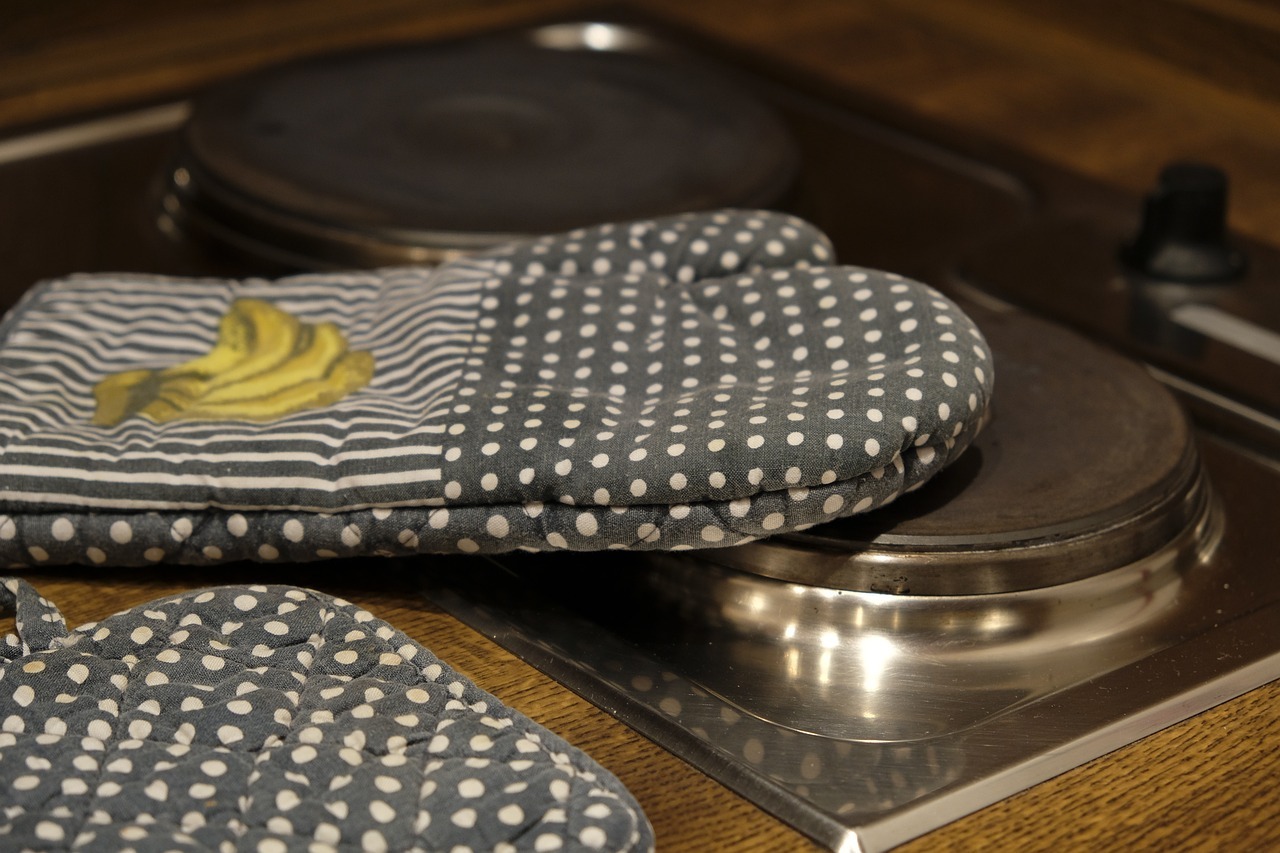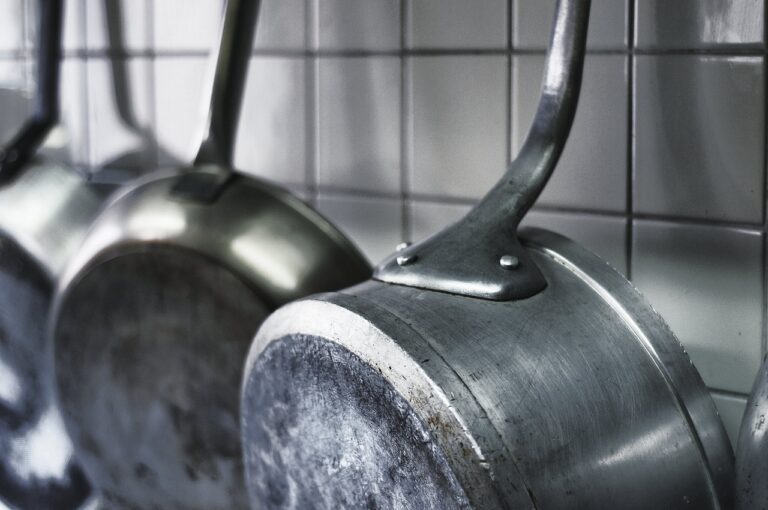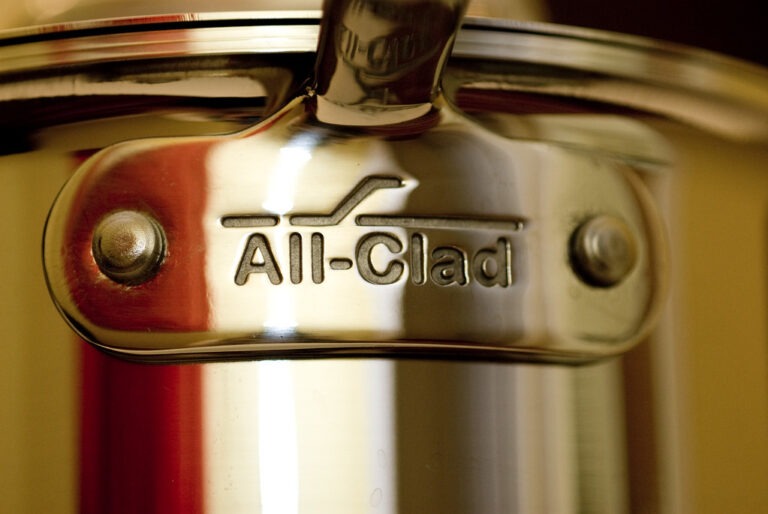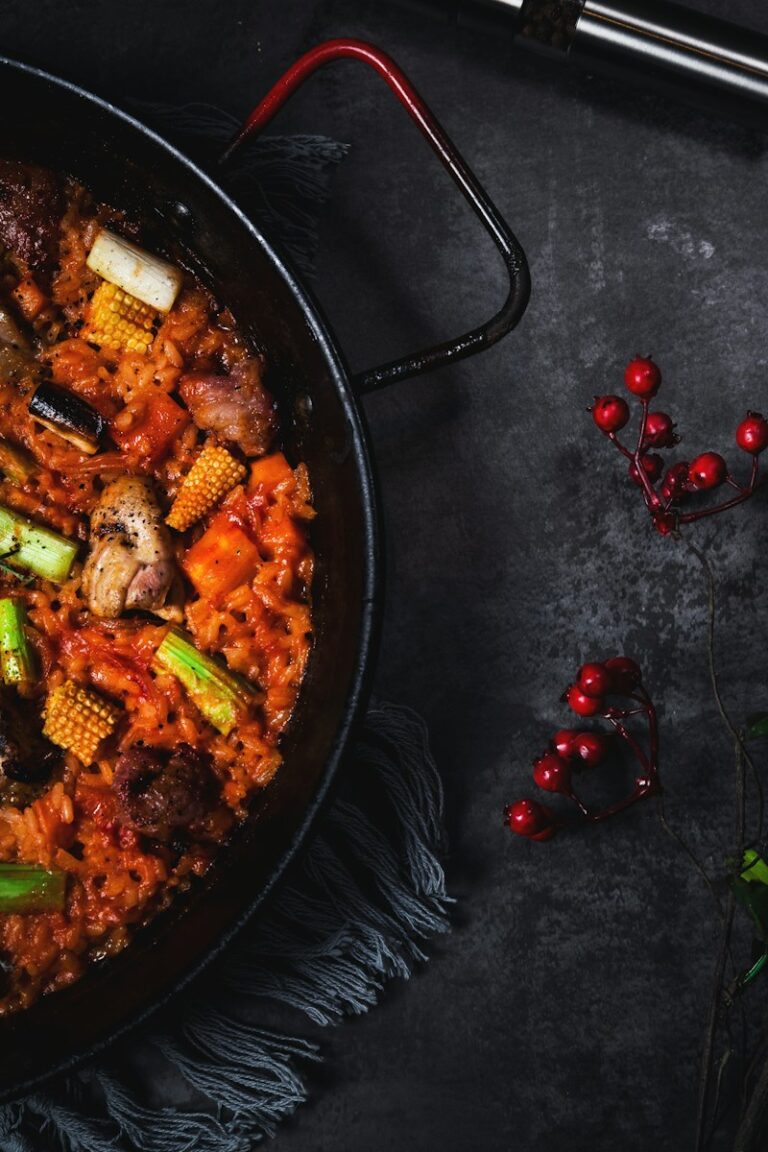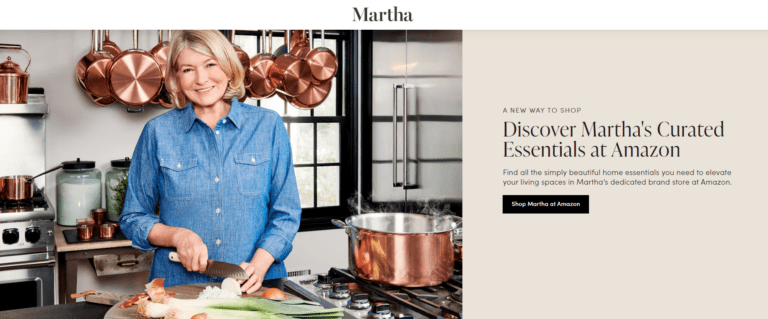I’ve got the perfect solution for those cooking on electric stoves.
In this article, I’ll guide you through the best cookware options that are compatible with your electric stove. From stainless steel and cast iron to non-stick and ceramic, I’ll cover all the essential types.
I’ll also share tips on selecting the right size and shape, as well as highlight some high-quality brands to consider.
Get ready to elevate your cooking experience!
Key Takeaways
- Stainless steel, copper, or aluminum cookware is ideal for electric stoves.
- Matching the size of the cookware with the heating element ensures efficient cooking.
- Flat-bottomed pans promote even heat distribution on electric stoves.
- Cookware with heat-resistant handles ensures safe and comfortable cooking on electric stoves.
Stainless Steel Cookware
I really enjoy using stainless steel cookware on my electric stove. It has excellent heat resistance and durability, making it perfect for cooking on electric stoves. The stainless steel material can withstand high temperatures without warping or melting, ensuring even heat distribution and efficient cooking.
I love how it retains heat well, allowing me to cook my food evenly and quickly. Stainless steel cookware is also incredibly durable, lasting for years without showing any signs of wear and tear. I don’t have to worry about it chipping or scratching easily like other types of cookware.
Overall, the heat resistance and durability of stainless steel cookware make it a reliable and long-lasting option for my electric stove.
Cast Iron Cookware
As an avid home cook, I love using cast iron pans on my electric stove. Cast iron is known for its excellent heat retention, which means it heats up evenly and stays hot for a long time. This makes it perfect for searing steaks or frying chicken. Plus, cast iron pans can be used on any type of stove, including electric.
When it comes to caring for my cast iron pans, seasoning is key. This process involves coating the pan with a thin layer of oil and baking it to create a non-stick surface. Seasoning not only prevents food from sticking but also helps protect the pan from rusting. Properly seasoned cast iron pans can last a lifetime if taken care of properly.
Here are five benefits of using cast iron pans on an electric stove:
- Excellent heat retention
- Versatile for different cooking methods
- Can be used on any stove type
- Durable and long-lasting
- Non-stick surface when properly seasoned
Copper Cookware
I love using copper cookware in my kitchen.
It’s known for its excellent heat conductivity, which means my food cooks evenly and quickly.
Plus, the maintenance is a breeze – a simple wipe-down with a soft cloth keeps it looking shiny and new.
Now, let’s dive into the points about copper cookware.
Heat Conductivity of Copper
Copper cookware has several advantages. It heats up quickly and evenly on electric stoves, thanks to its excellent heat conductivity. This allows for precise temperature control while cooking and ensures even cooking throughout the entire dish. The quick heat-up time also saves valuable cooking time, making it ideal for busy individuals.
However, there are a few disadvantages to consider. Firstly, copper tends to react with certain acidic foods, resulting in a metallic taste. Secondly, copper cookware requires regular polishing to maintain its shiny appearance. Lastly, copper cookware is generally more expensive compared to other materials.
Despite these disadvantages, the heat conductivity benefits of copper cookware make it a popular choice among professional chefs and cooking enthusiasts alike.
Maintenance of Copper Cookware
Maintaining the shiny appearance of my copper pots and pans can be time-consuming, but it’s well worth the effort. The benefits of using copper cookware are numerous, making the maintenance worth every minute.
Copper is an excellent conductor of heat, ensuring even and quick cooking. To maintain the beauty and functionality of my copper cookware, I follow a simple cleaning routine.
After each use, I wash the pots and pans with mild soap and warm water, making sure to remove any food residue. Then, I dry them thoroughly to prevent any water spots or tarnishing.
To restore the shine, I occasionally polish the copper with a mixture of lemon juice and salt. With regular maintenance, my copper cookware not only looks stunning but also delivers exceptional cooking results.
Non-Stick Cookware
I love using non-stick cookware in my kitchen because it makes cooking a breeze.
It’s perfect for my electric stove as it heats up quickly and evenly.
Plus, cleanup is a breeze since nothing sticks to the surface, saving me time and effort.
Safe for Electric Stoves
As an electric stove user, I find it important to ensure that my cookware is safe for use on this type of heat source. Electric stove safety is crucial to prevent accidents and ensure the longevity of both the stove and my cookware.
Here are some tips to keep in mind when selecting cookware for electric stoves:
- Choose cookware with flat and smooth bottoms to ensure even heat distribution.
- Opt for materials that have high heat conductivity, such as stainless steel or copper.
- Avoid using cookware with non-flat or warped bottoms, as they can cause uneven heating and hot spots.
- Check for compatibility with induction cooking if you’ve an induction electric stove.
- Always follow the manufacturer’s guidelines for safe usage and maintenance of your cookware.
Easy to Clean
Cleaning my pots and pans after cooking on the electric stove is a breeze. With easy cleaning and quick maintenance, I can spend more time enjoying my delicious meals and less time scrubbing away stubborn stains. The smooth surface of the electric stove allows for effortless wiping, leaving my cookware looking brand new. To give you a visual representation of just how easy it is to clean, here’s a table showcasing the simplicity of maintaining my pots and pans:
| Cookware Type | Cleaning Method |
|---|---|
| Non-stick | Gentle scrub with soapy water |
| Stainless steel | Soak and scrub with a sponge |
| Cast iron | Rinse with hot water, dry, and oil |
| Ceramic | Wipe clean with a damp cloth |
As you can see, keeping my cookware clean and in top condition is a stress-free task. It’s just another reason why cooking on an electric stove is such a pleasure.
Ceramic Cookware
When using my electric stove, I prefer using ceramic cookware for its even heat distribution. Ceramic cookware is known for its heat resistance, making it perfect for high-heat cooking. Not only does it withstand high temperatures without warping or cracking, but it also ensures consistent cooking performance.
Here are some reasons why I love using ceramic cookware:
- Excellent heat retention: Ceramic cookware retains heat well, allowing for even cooking throughout the dish.
- Non-stick surface: The smooth ceramic surface prevents food from sticking, making it easier to clean.
- Versatility: Ceramic cookware can be used on various heat sources, including electric, gas, and even in the oven.
- Chemical-free cooking: Unlike some non-stick coatings, ceramic cookware is free from harmful chemicals like PFOA and PTFE.
- Aesthetically pleasing: Ceramic cookware comes in a variety of colors and designs, adding a touch of style to my kitchen.
Overall, ceramic cookware enhances my cooking experience by providing excellent heat distribution and a safe cooking surface.
Induction-Compatible Cookware
I love how induction-compatible ceramic pans seamlessly transfer heat to my food, resulting in precise cooking temperatures and delicious meals.
Induction cooking has many benefits, such as faster heating times and energy efficiency. Unlike traditional electric or gas stoves, induction cooktops use magnetic fields to directly heat the cookware, which means no wasted heat.
Ceramic is one of the best materials for induction cooking because it’s non-reactive and distributes heat evenly. It also retains heat well, allowing for consistent cooking. Additionally, ceramic pans are durable and easy to clean.
I appreciate the versatility of ceramic pans in my induction kitchen, as they can be used for searing, sautéing, and simmering.
Thanks to induction-compatible ceramic pans, cooking has become a joyous experience for me.
Oven-Safe Cookware
When it comes to oven-safe cookware, I can’t stress enough how important heat resistance and durability are. Having cookware that can withstand high temperatures is essential for cooking dishes that require oven-baking. As someone who loves to experiment with different recipes, I rely on my oven-safe cookware to deliver consistent results every time.
Here are some reasons why heat resistance and durability matter:
- Heat resistance ensures that the cookware can handle high oven temperatures without warping or cracking.
- Durability guarantees that the cookware will last for a long time, even with frequent use and exposure to heat.
- Oven-safe cookware allows for versatile cooking options, from searing on the stovetop to finishing in the oven.
- It provides convenience by allowing you to transfer food directly from the stovetop to the oven without needing to transfer to another dish.
- Oven-safe cookware promotes even heat distribution, resulting in perfectly cooked meals every time.
Investing in high-quality oven-safe cookware is a wise choice for any cooking enthusiast.
High-Quality Cookware Brands
As a cooking enthusiast, I’ve found that investing in high-quality brands is crucial for reliable and consistent results.
When it comes to cookware, I believe that high quality non-stick options are a must-have in any kitchen. Not only do they make cooking and cleaning a breeze, but they also ensure that your food doesn’t stick or burn.
Brands like All-Clad, Calphalon, and T-fal offer exceptional non-stick cookware that’s built to last.
Additionally, I’m also conscious of choosing eco-friendly cookware options. Brands like GreenPan and GreenLife use ceramic or plant-based coatings that are free from toxic chemicals and are better for the environment.
Choosing the Right Size and Shape of Cookware
The right size and shape of pots and pans are essential for efficient and even cooking on a variety of heat sources. When it comes to electric stoves, choosing the right material for your cookware is crucial. Here are some key factors to consider:
- Material: Opt for cookware made of materials that conduct heat well, such as stainless steel, copper, or aluminum. These materials ensure quick and even heat distribution on electric stoves.
- Size: The size of your cookware should match the size of the heating element on your electric stove. Using a smaller pot on a large burner can result in uneven cooking and wasted energy.
- Shape: Consider the shape of your cookware. Flat-bottomed pans are ideal for electric stoves as they provide maximum contact with the heating element, promoting even cooking.
- Weight: Choose cookware that’s neither too heavy nor too light. Heavy pans can take longer to heat up, while lightweight pans may not distribute heat evenly.
- Handles: Look for cookware with heat-resistant handles to ensure safe and comfortable handling while cooking on electric stoves.
Conclusion
In conclusion, when it comes to cookware for electric stoves, there are various options to choose from. Stainless steel, cast iron, copper, non-stick, ceramic, and induction-compatible cookware are all suitable choices.
It’s important to consider the oven-safe feature and opt for high-quality cookware brands. Additionally, selecting the right size and shape of cookware can greatly enhance your cooking experience on electric stoves.
